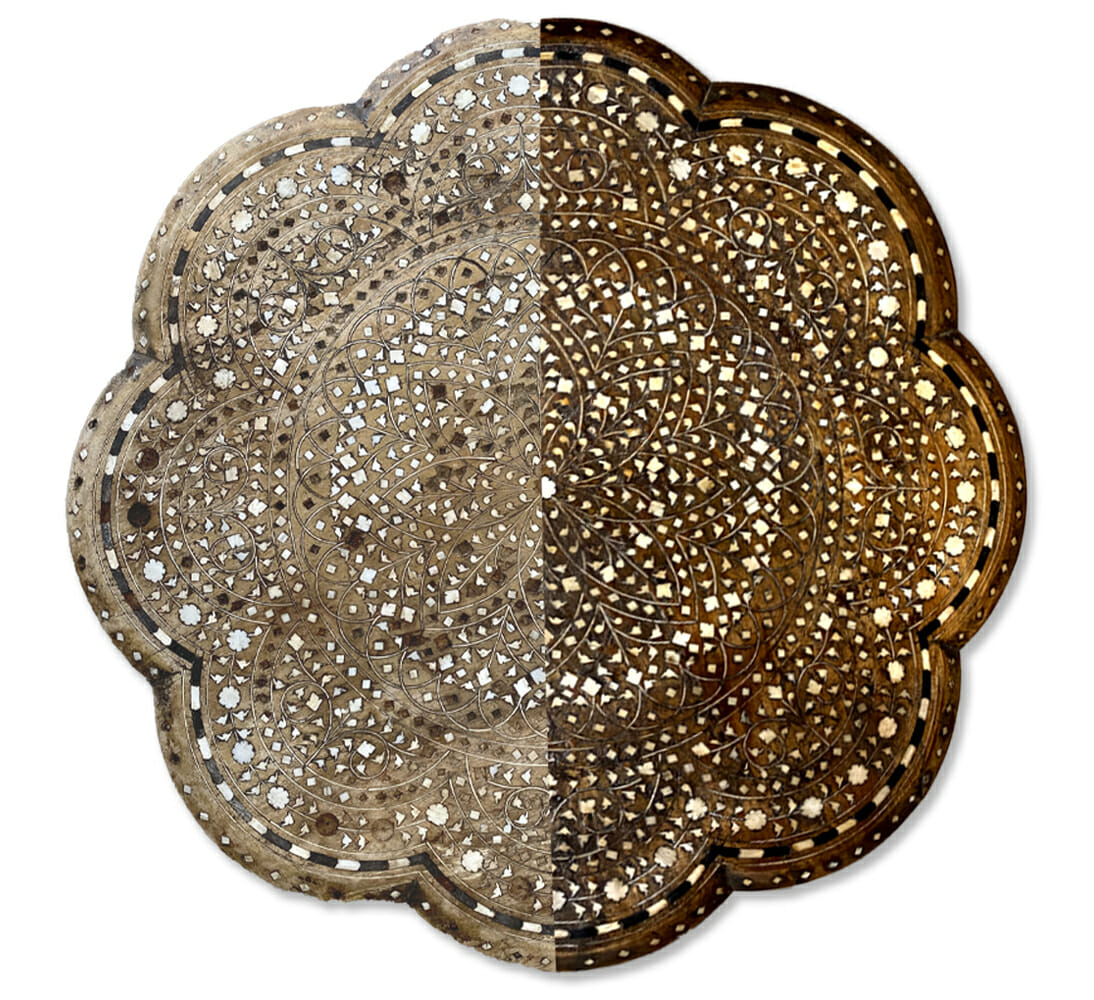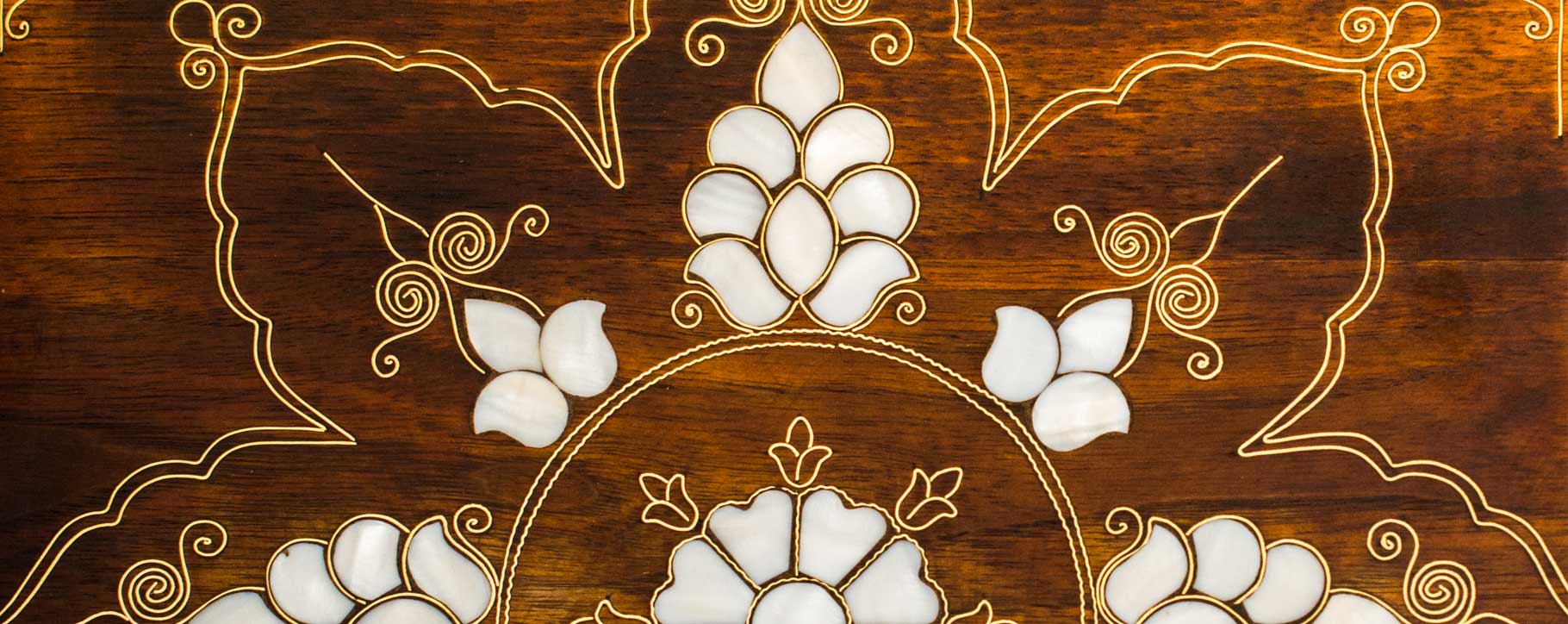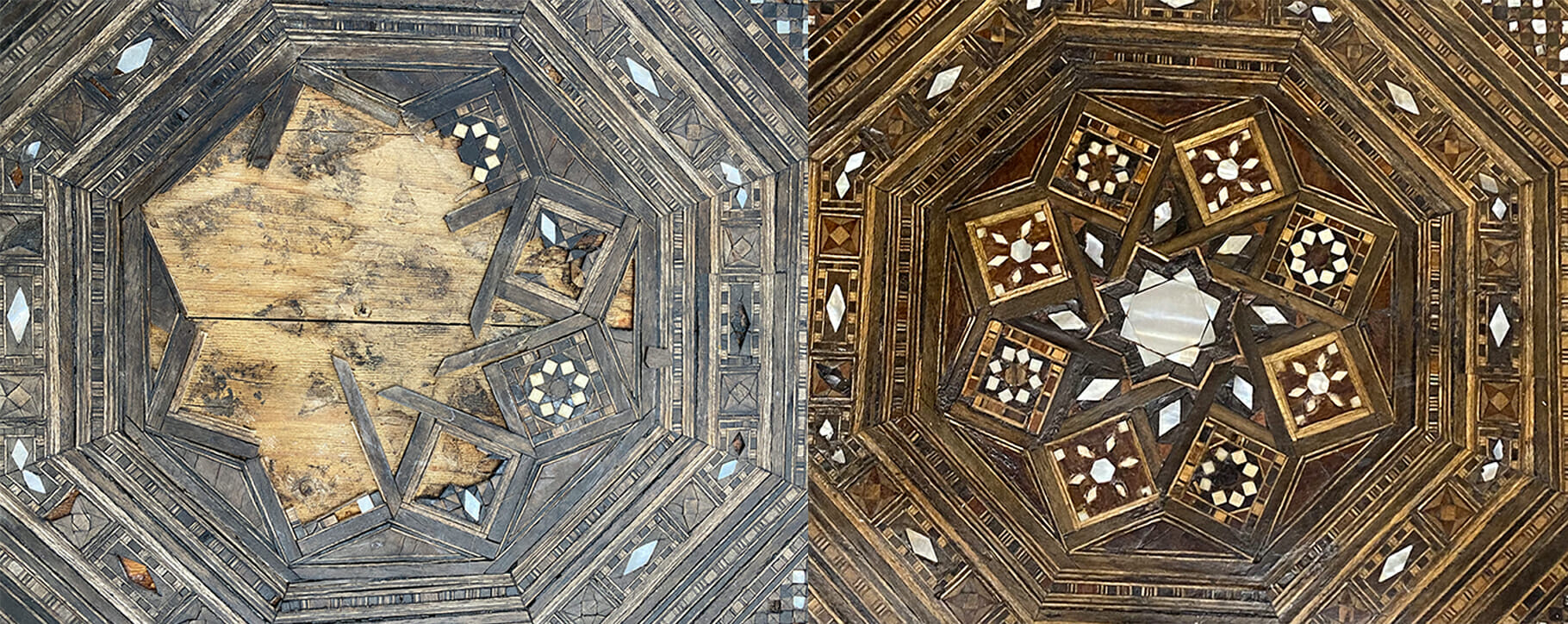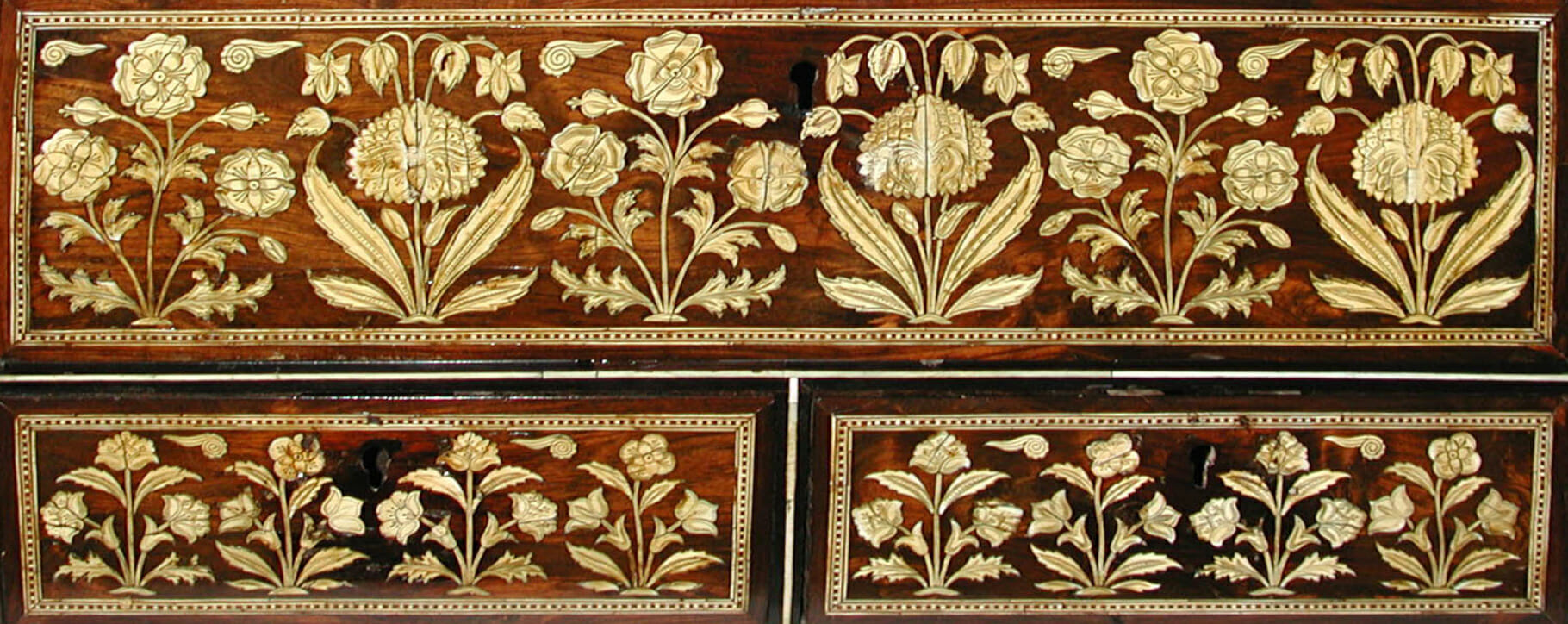Marquetry is a method of wooden embellishment which is as old as classical civilisation. This intricate art form has been found in the city of Pompeii and the Herculaneum, but like many forms of art, it became hugely popular across Europe during the renaissance period in the 16th century, beginning in the artistic epicentres of Florence and Antwerp. Marquetry is popular in antique furniture and historic interior designs, as well as smaller items such as boxes, trays, and decorative objects. The common examples found today are often sturdy pieces from the Victorian era, though examples from earlier centuries are also frequently found at auction.

What is marquetry?
The word marquetry comes from the middle french for ‘inlaid work’ and is created from thin veneers which are inlaid into a wooden item to create a decorative flourish or detailed scene. You may also find geometric patterns which are referred to as ‘parquetry’.
Veneers are thin slices of wood or bark, often less than 3mm thick and selected from trees that have a particularly interesting pattern or colour. Historically, marquetry may have included a variety of materials, including ivory, pearl, tortoiseshell, or metal elements, though the art form is primarily produced with local or exotic timber.
Often the decorative areas may be used to enhance a particularly beautiful and unique grain or shade, with some inlaid work being a historically economic way to display a fashionable variety of wood without needing to purchase an expensive piece of solid furniture.

Protecting marquetry
Whilst staining will create a visual impact that disturbs the details of the artwork or pattern, drastic damage may occur from the wood reacting to fluctuations in the environment or exposure to water. Changes in temperature and humidity may cause the elements in the marquetry design to lift away or curl, as will warping caused by moisture. Therefore, a key part of marquetry care is ensuring that it is in a dry area with a controlled temperature and humidity level.
The levels of temperature and humidity must be even, at around 20 degrees Celsius and 40% humidity, as a drastic change in either direction could cause harm over time. Frequent changes may cause the wood to expand and contract, eventually compromising the delicate nature of the inlaid pieces and any surrounding wooden features.

You may be able to tell if a piece of furniture has warped due to loose joints or drawers and doors which no longer fit into place as they should. A moisture-damaged veneer may curl at the edges or have a rippled effect. If you spot this, contact our team for advice on restoration and conservation care to ensure the damage does not become worse.
Whilst moisture should be avoided, a very dry atmosphere can also have an adverse effect causing a brittle surface. To keep the wood subtle and protected, you can apply a traditional mixture of turpentine and linseed oil.
If any evidence of insect infestation is found, have this investigated by our professionals. Even empty holes from previous infestations can be an attractive area for woodworm to return to, so it is recommended that our conservator closes these off with effective methods, as well as completely clearing the piece of any possible inhabitants. You can read more about challenges faced by wooden furniture here.
How to act if marquetry becomes damaged
If any inlaid decoration becomes loose or warps, do not force them back into place, as this may cause further damage. Avoid the use of household adhesives to stick these back into place yourself, as the acidic chemicals in these solutions may discolour or deteriorate the wood.
Keep hold of any loose pieces, as our conservators may be able to fully reapply these. Returning as many of the original pieces as possible will help to ensure the historic integrity of the furniture or object, this may help it retain artistic and monetary value.
Where a piece cannot be re-adhered or is lost entirely, our conservators can create new pieces. New additions will be carefully colour-matched and artistically accurate, they can be set into place to ensure there is no visual disturbance when the restoration is complete.
When a piece of wooden furniture meets water or high levels of moisture, contact our team as soon as possible to prevent deterioration and decay. In these situations, the faster the response from our conservators; the better the chances are of all original areas surviving. The same is true for any spillages or staining, which if left without intervention could degrade the wood or sink further into the grain over time.

Restoring marquetry
At Fine Art Restoration Company we have a specialist team of conservators who are trained in the preservation of wooden furniture, artworks, and objects. We have restored many marquetry items, including tables with classic and geometric designs, as well as a wooden tray with an inlaid military insignia.
Our nationwide collection and delivery service ensures that artwork and furniture can be professionally handled and transported to our studio with ease, where they will be met by our trained conservation team. Once the item has been assessed, our conservators will provide gentle cleaning treatments, followed by any requirements to return or recreate missing parts. These are set into place with conservation approved adhesives, which do not put the furniture or artwork at risk of acidic decay.

Our team is also able to replace or secure any areas which may have been created from materials other than wood, including metallic elements, upholstery, shell, mother of pearl, or ivory. Where the material is no longer ethically or legally available, such as ivory or tortoiseshell, our team can use synthetic versions which seamlessly fit with the original. Any new elements will always be carefully colour-matched and appropriate for the era of the piece.
If a wooden item is water damaged, whether this is from a flood or household leak, we recommend getting in touch as soon as possible to minimise any warping or deterioration. Our team can advise you on which steps need to be taken, as well as arranging a fast collection so that it is seen by our specialists as soon as possible. You can read more about how to treat water-damaged wooden furniture here.
If you have a piece of furniture or any other genre of antique which includes marquetry, please contact our team for advice and guidance on its restoration and care. You can email us via [email protected] or call 0207 112 7576.






